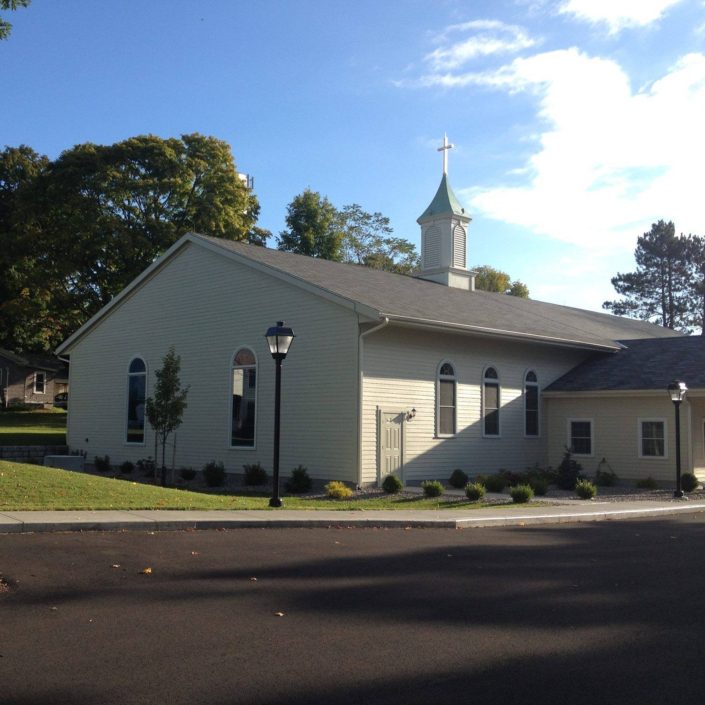
Land Where The Partridge Drums
A History of the Akwesasne Mohawk Nation
In the Shadow of Serpents:
Trials and Tribulations of the Early 1800’s
A Glimpse of Akwesasne Life in the Early 1800’s
Written and illustrated by Darren Bonaparte
Lord Selkirk visited the St. Lawrence River Valley in 1804 and gave this brief description of life in Akwesasne in his diary entry of Friday, January 20:
“Crossed to St. Regis, abuut 200 warriors; moved from Caughnawaga by the missionaries who thought to get them farther from the rum of Montreal. They have tolerable log houses, iron stoves, glass windows and on a whole not worse lodged than the generality of laborers in Scotland and even England. Cultivate Indian corn, pound it in mortars hollowed out of trees, make moccasins. They make pitchers of elm bark. Indians have contributed for building a mill, the revenue of which they allow the priest, Roderick Macdonell, a good soul who lives in different style from those described by Charlevoix.” (Harkness 1946:80-81)
The War of 1812
The Mohawks of Akwesasne, divided by both the international border drawn through their territory and by the actions of Colonel Louis Cook and his supporters, would have little rest from conflict in the early years of the nineteenth century. Trouble continued to brew between Imperial Britain and the independent United States. This culminated in the British attack on an American vessel, the U.S.S. Chesapeake, and the capture of its crew. In 1811 the American frigate President attacked the H.M.S. Little Belt. That same year saw an unsuccessful attack by British-backed Indians under Shawnee Chief Tecumseh against American troops at the Battle of Tippecanoe. Tecumseh’s uprising was an attempt to keep the Americans from pushing further westward. War was finally declared in 1812, but opinion about the war with Britain was divided among the American states. Supporters of the war who lived in the southern and western states (known as the “War Hawks”) saw Britain’s ongoing war with France as the golden opportunity to drive the British from North America once and for all, while detractors saw the prospect of another war as expensive and futile. (Wilder 1987:4-6)
Haudenosaunee from both sides of the border met together before the war and agreed that they would remain neutral in the conflict, since their participation in all of the past engagements between the Europeans was seen as a costly mistake in both in loss of life and territory. It was not the fear of choosing the wrong side and being treated poorly by the victors that prompted their neutrality; rather, it was their justifiable fear that they would be betrayed by their allies if they won.
These sentiments were best expressed in a speech delivered after a lengthy deliberation by the Haudenosaunee at Grand River:
“Brother – We act from a disinterested Love to our people, and to ensure their welfare and preservation, – We shall lay before you the reasons which induce us to recommend a neutrality. The gloomy Day, foretold by our ancients, has at last arrived; – the Independence and Glory of the Five Nations has departed from us; – We find ourselves in the hands of two powerful Nations, who can crush us when they please. They are the same in every respect, although they are now preparing to contend. We are ignorant of the real motives which urge them to arm, but we are well assured that we have no interest therein, and that neither one nor other have any affection toward us. We know that our Blood shed in their Battles will not even ensure their compassion to our Widows and Orphans, – nor respect to our Tribes weakened in their Contests. Has not our Nation partaken in ev’ry War in which the English have been engaged, – since they first joined hands, (for then the English and Americans were one). In standing between them and the French, many a Valiant Warrior has fallen. But although we have thus been weakened, and deprived of our Independence, it has not been by the Victories of a Conqueror; – it has been the neglect or Unkindness of our Friends. Seeing therefore, that no good can be derived from War, we think we should only seek the surest means of averting its attendant Evils: We are of opinion that we should follow the example of some of their people, who never bear arms in war, and deprecate the principle of hostility.” (Blanchard 1980:305-306)
Thus the Haudenosaunee as a whole resisted the efforts of the British government to recruit their men into military service. This neutrality would remain in effect as long as their territories were not invaded.
The War of 1812 saw activity along the western frontier, the Great Lakes, and the St. Lawrence River. Akwesasne, because of its location on the international border and the St. Lawrence River, faced an uncertain future when rumors of war began to reach Mohawk ears. The American authorities became fearful that the coming war would unleash destructive war parties against white settlers near Akwesasne, so they demanded that any native traveling off the reserve carry a paper pass designating that they were “peaceable.” They were also prohibited from hunting off the reserve. The threat of starvation brought pleas from Colonel Louis Cook for assistance from the American authorities. Some of these provisions were shared with the Mohawks living north of the border. It is recorded that some of these provisions were shared out of kindness with the priest at St. Regis, but this aroused the suspicions of the British authorities that the priest was accepting bribes from the Americans. Historians also note that a black market in smuggled American food and supplies began during the war, as British troops in Cornwall were poorly supplied by the Crown.
Next week:The Battle at St Regis
By Darren Bonaparte, historian and author of The Wampum Chronicles. Reprinted with permission.
Darren Bonaparte is a cultural historian from the Akwesasne First Nation. He is a frequent lecturer at schools, universities, museums, and historical sites in the United States and Canada. He has written four books, several articles, and the libretto for the McGill Chamber Orchestra’s Aboriginal Visions and Voices. Darren is a former chief of the Mohawk Council of Akwesasne. He is the creator of The Wampum Chronicles and historical advisor to film and television. He currently serves as the Director of the Tribal Historic Preservation Office of the Saint Regis Mohawk Tribe.














